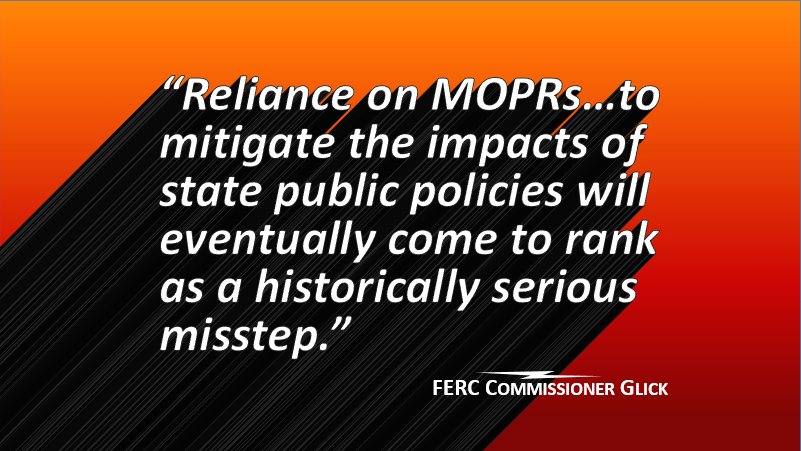1.FERC invades state authority
2.FERC’s rate isnt just and reasonable
3.FERC makes a policy change w/o explaining
4.FERC is inconsistent/illogical/unresponsive
Here’s how some parties frame this objection:
There’s a lot of overlap here bt J&R claims and arbitrary and capricious claims.
AEE and AEMA make such a claim. They take issue w FERC’s conclusion that participation in the capacity auction by DR/EE/storage that receives state support results in unJ&R rates.
AMP+APPA+NJPPA: no “evidence drawing a connection between alleged price suppression attributable to State Subsidies and any failure of RPM to send appropriate price signals to attract generation needed to ensure resource adequacy.”
FESolutions: The Order “is unduly discriminatory because it concocts a byzantine scheme of exemptions from the MOPR that is divorced from any coherent logic or principle.”
APPA: FERC “did not provide a reasoned explanation for its departure from its prior rulings acknowledging the merits of accommodating the public power business model.”
NC Coops: “eviscerating the self-supply option” is an “unexplained…change to the design of RPM…especially considering the long history of FERC cases accepting the premise that PJM’s capacity market is an alternative to, and not a substitution for, self-supply.”
Clean Energy Trades make precisely the same argument.
Exelon: FERC “has not considered the costs, has not acknowledged the cost increase, has not identified any concrete benefit in the form of increased system reliability, and has not justified the costs in light of the benefits.”
Clean Energy Trades: "Without further explanation, a bare conclusion that an existing rate is unjust and unreasonable is nothing more than ‘a talismanic phrase that does not advance reasoned decision making.’”
NC Coops – “To the extent the definition of State Subsidies rests on a finding that co-ops self-supply resources receive subsidies, and that those subsidies stem from state action, there is no evidence to justify that finding.”
Ratepayer Adovcates: "The Order wrongly treats resources’ receipt of some revenues as market-distorting and requiring mitigation, some revenues as market-distorting but not triggering mitigation, and other revenues as not market distorting.”
PJM Industrials: FERC’s "finding that the MOPR should apply to Demand Response Resources is not supported by substantial evidence.”
Many (many) parties dispute FERC’s decision to MOPR resources selling voluntary RECs.
Even EPSA and its members ask FERC to reconsider this. Member LSPower asks FERC to reconsider demand response.
Enviros: “The vague definition of State Subsidy unconstitutionally delegates to PJM and the independent market monitor authority to make judgments that are core governmental functions.”
No one is better than the co-ops and public power at this line of attack.
Parties take issue with FERC's 90-day deadline for PJM to file proposed tariff changes.
Enviros: “The Commission’s haste to put in place new market rules is confounding in light of the length of time it took the Commission to establish a replacement rate.” ZING!
There’s more in the docket (EL18-178-002).
Enjoy.





